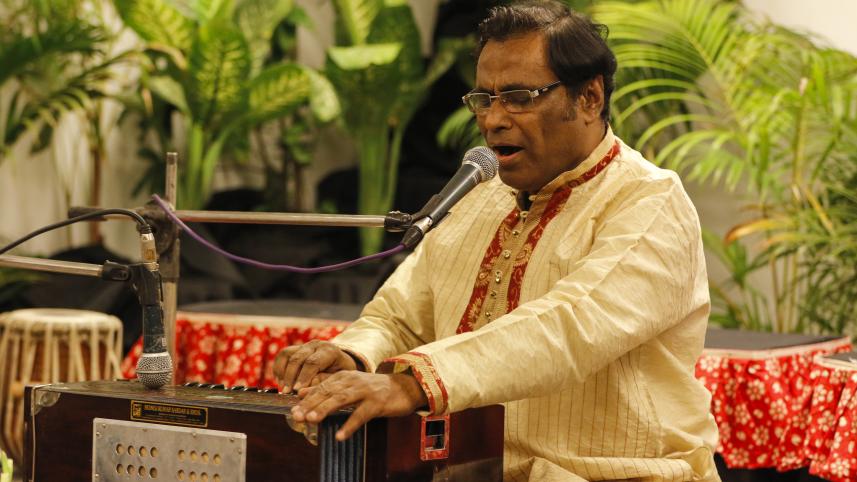Yakub Ali Khan’s insights on ragas created by Nazrul

Today, the nation is observing the 44th death anniversary of our National Poet Kazi Nazrul Islam. A poet of rebellion and love, he was an unmatched lyricist, composer, music director and a great philosopher.
We were inspired from Nazrul's poems and songs during the Liberation War in 1971, and all other glorious democratic movements. Nazrul wrote and composed nearly 4000 songs, creating the genre of Nazrul Sangeet.
Renowned Nazrul Sangeet exponent and teacher Yakub Ali Khan, in a recent conversation with The Daily Star, shared his insights on ragas created by Kazi Nazrul Islam, as well as the poet's musical genius.
"Kazi Nazrul Islam enriched almost all genres of Bengali songs. His compositions are based on the solid foundation of Indian classical music," said Yakub Ali Khan. "Nazrul developed 19 distinct ragas and 2 talas, in addition to composing Khayal, Thumri and Tappa-styled Bangla songs. He contributed to Kabyageeti, Bhajan, Kirtan, Ghazal, Shyama Sangeet, Hamd-Naat, Islamic songs, among others. Nazrul is, in a word, a musical institution."
According to Khan, the subtle hints of ragas used in Nazrul Sangeet is the flow of a musical river. "Ragas created by Nazrul are exceptionally brilliant. Some are very melodic. But are we giving appropriate attention to his ragas?" he questioned.
Nazrul used Bengali terms while naming his ragas, and these names were inserted in the songs he composed. The songs -- Rumjhum Rumajhuma Ke Bajaye and Hashey Akashey Shuktara, are respectively set on Raga Nirjhorini and Arunranjoni. The genre of adhunik is also indebted to Nazrul in many ways.
"The ragas developed by Nazrul are now confined to his books only, as very few artistes occasionally perform those. The conventional approach of several Ustads towards the genre is a bar to attain acceptability among the classical music performers," mentioned the artiste. "If classical and Nazrul Sangeet gurus, exponents, researchers and, of course, the performers sit together and add bandish (words) to those, the ragas will get a new lease of life."
In reality, the bud is yet to bloom. The trend of making use of Bengali bandish in Hindustani classical music has not yet been established as a standard, according to Khan.
The poet composed the number Benuka O Ke Bajaye Mohua Bon-e, based on Raga Benuka. He also composed several complex songs like Dolonchapa Boney Doley and Shono O Shondhya Maloti set on Raga Dolonchapa and Shondhya Maloti, respectively.
"Nazrul mingled the essences of several ragas and developed his own that are often very difficult to render. Compositions based on several ragas, including Debjani, Minakkhi, Banokuntola, Boro Hongsho Sharong and Rakto Hongsho Sharong are such examples," said the singer.
Through his exclusive compositions, Kazi Nazrul Islam gave birth to and revitalised many ragas that were on the verge of extinction. The compositions --Nilambori Shari Pori (Raga Nilambori), Gunjamala Goley Kunjey Esho Hey Kala (Raga Malgunja), Bashonto Mukhor Aaji (Raga Basant Mukhari), Phool-er Jalshaye Nirob Keno Kobi (Raga Hijaj), Jhoro Jhoro Jhorey Shaon Dhara (Raga Ramdashi Malhar) are apt examples.
Even though death has taken away the poet's physical presence from us, the legacy that Nazrul has left behind is immense. The poet will stay alive in our hearts forever.



 For all latest news, follow The Daily Star's Google News channel.
For all latest news, follow The Daily Star's Google News channel.
Comments